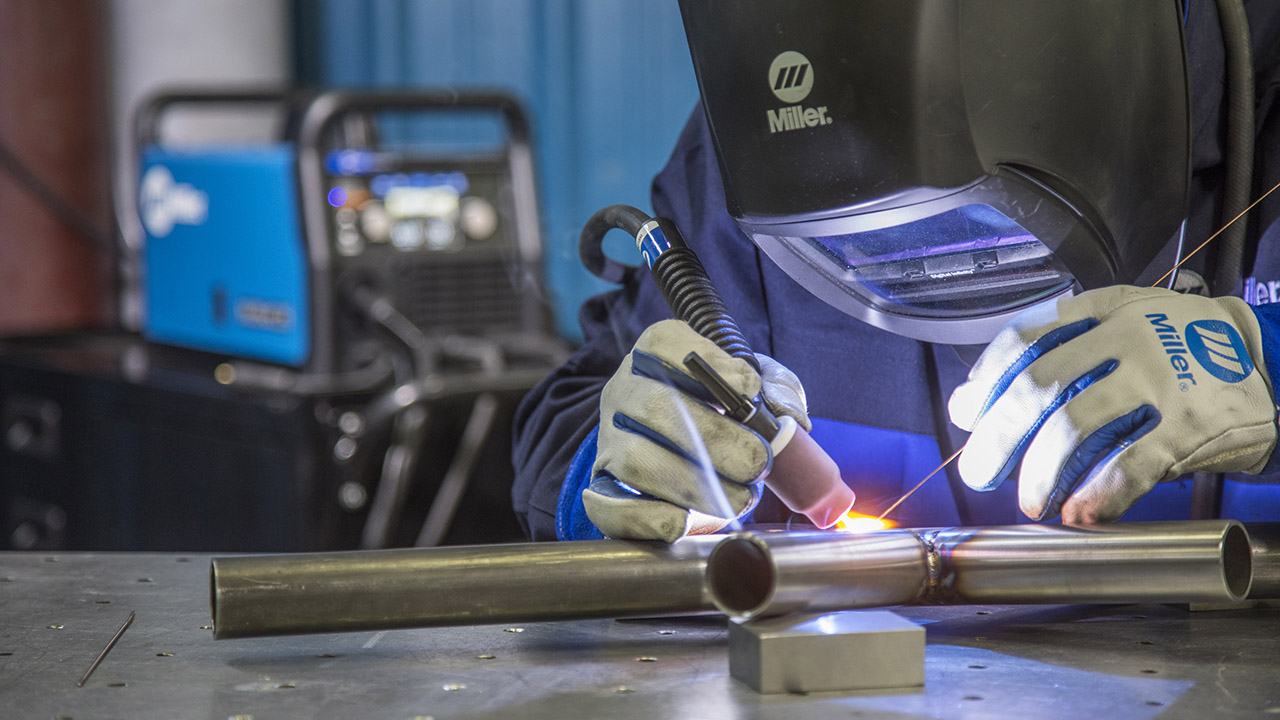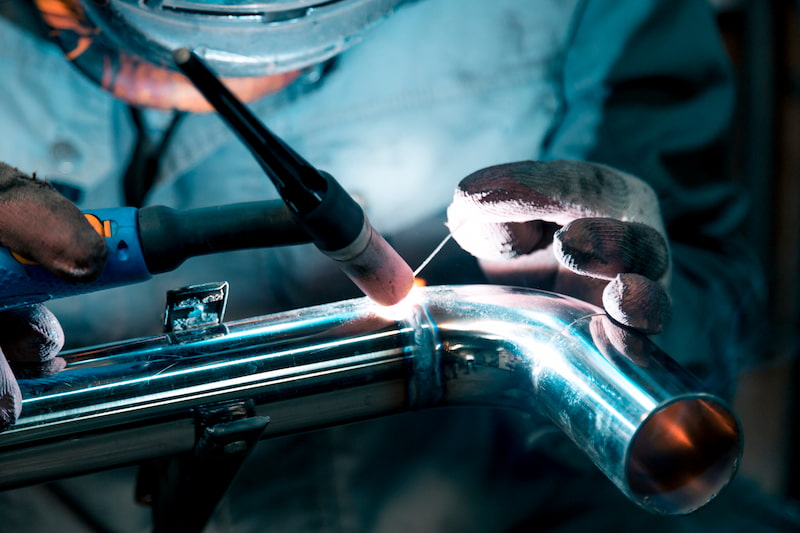Common Welding Repair Issues and Just How to Address Them Successfully
Welding fixings frequently experience a variety of problems that can jeopardize the honesty of the last product. Usual troubles include inadequate penetration, porosity, and misalignment, amongst others. Each flaw presents unique difficulties that require certain approaches for resolution. Recognizing these problems is vital for welders intending to improve their end results and abilities. This conversation will certainly explore these common welding repair work problems and reliable methods to resolve them.
Inadequate Infiltration
Poor infiltration occurs when the weld metal falls short to fully fuse with the base product, resulting in weak joints and possible structural failures. This concern typically stems from insufficient heat input, wrong electrode angle, or inappropriate welding speed. Welders may experience poor penetration because of a miscalculation of the necessary specifications for a details material thickness or kind. Furthermore, contamination on the base product's surface area can impede efficient bonding, exacerbating the trouble. To deal with inadequate infiltration, welders should ensure suitable settings on their devices and preserve a clean work surface. Normal assessment of welds is suggested to determine any kind of shortages early, enabling for prompt improvements and the avoidance of jeopardized structural honesty in bonded assemblies.
Porosity
Porosity is a typical issue in bonded joints that materializes as little gas bubbles trapped within the weld metal. This problem can jeopardize the stability of the weld, causing reduced stamina and potential failure under anxiety. Belgrade Welding. Porosity generally arises from contamination, wetness, or improper welding techniques, which permit gases to escape into the liquified weld swimming pool. To resolve porosity, welders ought to ensure correct surface preparation, preserve a tidy workplace, and utilize suitable welding criteria. In addition, choosing the ideal filler product and securing gas can minimize gas entrapment. Regular assessment and screening of welds can aid determine porosity early, assuring prompt rehabilitative actions are taken, thus protecting the quality and reliability of the welded structure
Misalignment
Imbalance in welding can develop from numerous factors, including incorrect configuration and thermal expansion. Recognizing the origin is important for effective resolution. Several modification strategies are readily available to realign parts and guarantee architectural stability.
Root causes of Imbalance
Welding misalignment usually stems from a selection of underlying issues that can endanger architectural honesty. One main reason is improper fit-up of parts before welding, which can lead to gaps and irregular surfaces. Variants in thermal expansion throughout the welding process can additionally lead to distortion, specifically if the materials being joined have different coefficients of expansion. Additionally, insufficient fixturing and clamping may fail to hold elements firmly in area, resulting in activity throughout welding. Badly kept tools, consisting of welding makers and tools, might introduce variances in the weld grain, more adding to imbalance. Driver error, stemming from insufficient training or experience, can also play a significant duty in producing misaligned welds.

Adjustment Techniques Available
Attending to imbalance successfully needs a combination of rehabilitative methods customized to the certain problems handy. One usual technique is making use of jigs or fixtures to hold elements in the correct setting during welding, making certain constant alignment. Furthermore, pre-heating the materials can help in reducing distortion and enhance fit-up. For substantial misalignment, mechanical adjustment methods, such as using hydraulic jacks or clamps, can be utilized to remedy the placement before welding. Post-weld heat treatment might additionally be needed to eliminate anxieties triggered by imbalance. Careful inspection and modification during the configuration stage can prevent imbalance problems from ending up being considerable troubles, advertising a smoother welding process and boosting general architectural honesty.
Distortion
Distortion is an usual difficulty in welding that can emerge from numerous variables, including uneven heating & cooling. Understanding the causes of distortion is essential for executing reliable avoidance methods. Addressing this problem not just improves structural integrity yet additionally enhances the general quality of the weld.
Reasons for Distortion
When based on the extreme warm of welding, products often undertake adjustments that can cause distortion. This sensation primarily emerges from thermal growth and contraction throughout the welding procedure. As the weld area warms up, the material increases; upon cooling, it gets, which can create inner stresses. On top of that, irregular home heating throughout a work surface can intensify these tensions, leading to bending or bending. The sort of material also plays a substantial duty; steels with varying thermal conductivity and coefficients of development may respond in a different way, causing unforeseeable distortions. Bad joint layout and insufficient fixturing can add to imbalance throughout welding, raising the chance of distortion. Understanding these reasons is essential for effective welding repair service and prevention approaches.
Prevention Techniques
Reliable avoidance strategies for distortion throughout welding concentrate on controlling warmth input and ensuring correct joint style. Maintaining a constant heat input assists to lessen thermal development and contraction, which can result in distortion. Utilizing techniques such as pre-heating the workpiece can additionally minimize the temperature slope, promoting uniform heating. Furthermore, choosing appropriate joint layouts, such as T-joints or lap joints, can boost security and minimize stress and anxiety concentrations. Implementing appropriate fixturing to safeguard the work surfaces in position further help in keeping placement throughout the welding procedure. Staggered welding series can disperse heat extra equally, stopping local distortion. By applying these techniques, welders can substantially decrease the probability of distortion and boost the total quality of their welds.
Cracking
Breaking is a typical problem run into in welding repair services, typically resulting from numerous elements such as inappropriate air conditioning prices, product option, or insufficient joint preparation. The event of splits can significantly compromise the stability of the weld, bring about prospective failures during operation. To resolve this concern, welders must initially evaluate the origin, guaranteeing that materials are suitable and appropriately selected for the specific application. Additionally, regulating the air conditioning price during the welding process is crucial; fast cooling can induce stress and result in fracturing. Appropriate joint layout and prep work additionally add to decreasing the threat. Applying these approaches can enhance weld top best home welder quality and durability, inevitably reducing the chance of cracking in ended up weldments.

Insufficient Fusion
A substantial concern in welding fixings is incomplete combination, which happens when the weld metal does not appropriately bond with the base product or previous weld passes - Montana Mobile Welding and Repair Welding. This issue can result in weaknesses in the joint, potentially compromising the stability of the bonded structure. Factors adding to incomplete blend consist of insufficient warm input, incorrect welding strategy, and contamination of the surface areas being signed up with. To address this concern properly, welders need to ensure appropriate pre-weld cleaning and surface area prep work, along with change their welding specifications to accomplish adequate penetration and blend. Normal assessment during the welding process can also assist determine incomplete combination early, enabling timely rehabilitative steps to enhance the total quality of the weld
Overheating
While welding fixings can enhance structural integrity, overheating presents a significant obstacle that can bring about product deterioration. Extreme heat throughout welding can modify the mechanical residential properties of steels, causing decreased stamina, enhanced brittleness, and bending. This phenomenon is especially crucial in high-stress applications where structural reliability is paramount. Determining getting too hot can entail visual assessments for staining or distortion, as well as keeping an eye on temperature during the welding process. To mitigate the threats connected with overheating, welders ought to use appropriate strategies, such as controlling warmth input, readjusting traveling rate, and utilizing suitable filler materials. Furthermore, carrying out pre- and post-weld warmth treatments can assist bring back product properties and improve the overall quality of the repair work, making sure lasting performance and safety and security.
Frequently Asked Inquiries
What Are the Usual Indicators of a Welding Flaw?

Exactly How Can I Test My Welds for Top quality?
To test welds for high quality, one can utilize aesthetic evaluations, ultrasonic testing, and radiographic approaches. Each strategy guarantees structural stability, recognizes issues, and verifies adherence to specified standards, inevitably improving linked here the dependability of the welded joints.
What Safety and security Precautions Should I Take While Welding?
When welding, one ought to focus on safety and security by using proper individual safety equipment, ensuring appropriate ventilation, safeguarding flammable materials away, preserving a tidy office, and understanding environments to stop crashes and injuries.
Can I Repair a Weld Without Redesigning the Entire Joint?
Fixing a weld without redesigning the entire joint is feasible, relying on the damages (Belgrade). Techniques such as grinding, including filler product, or utilizing a welding process can efficiently resolve certain defects while maintaining the surrounding structure
What Devices Are Vital for Efficient Welding Fixes?
Important devices for effective welding fixings include a welding equipment, cord brush, mill, safety gear, clamps, and filler materials. Each device plays a crucial function in guaranteeing high quality and safety and security during the repair service procedure. Porosity usually develops from contamination, wetness, or inappropriate welding techniques, which enable gases go to this site to escape into the molten weld pool. Improperly kept tools, consisting of welding machines and tools, may introduce incongruities in the weld grain, additional adding to imbalance. When subjected to the intense warmth of welding, materials commonly undergo changes that can lead to distortion. Cracking is a typical problem run into in welding repair services, usually resulting from various aspects such as improper air conditioning rates, product option, or inadequate joint prep work. A substantial issue in welding repairs is insufficient blend, which occurs when the weld metal does not effectively bond with the base material or previous weld passes.